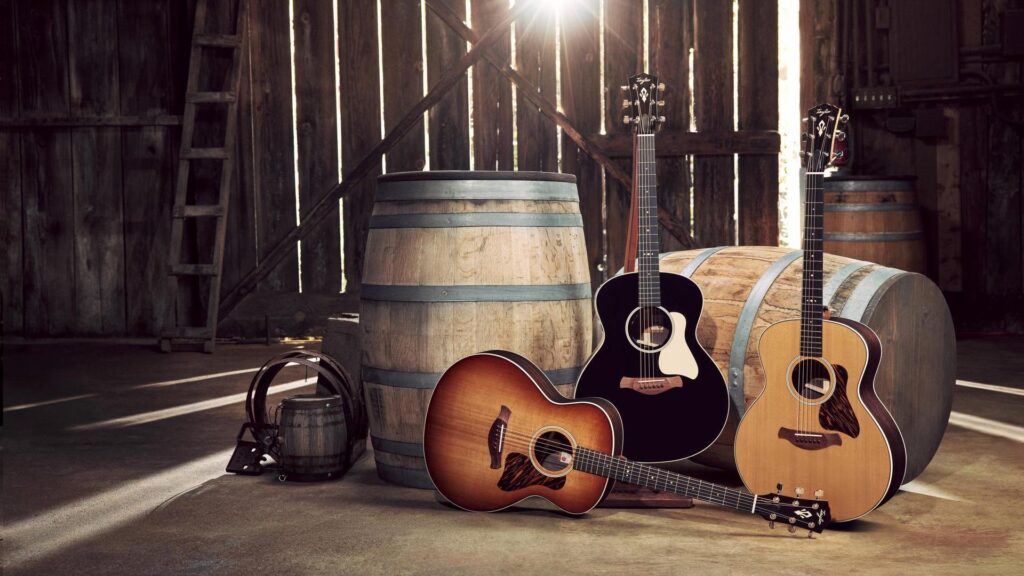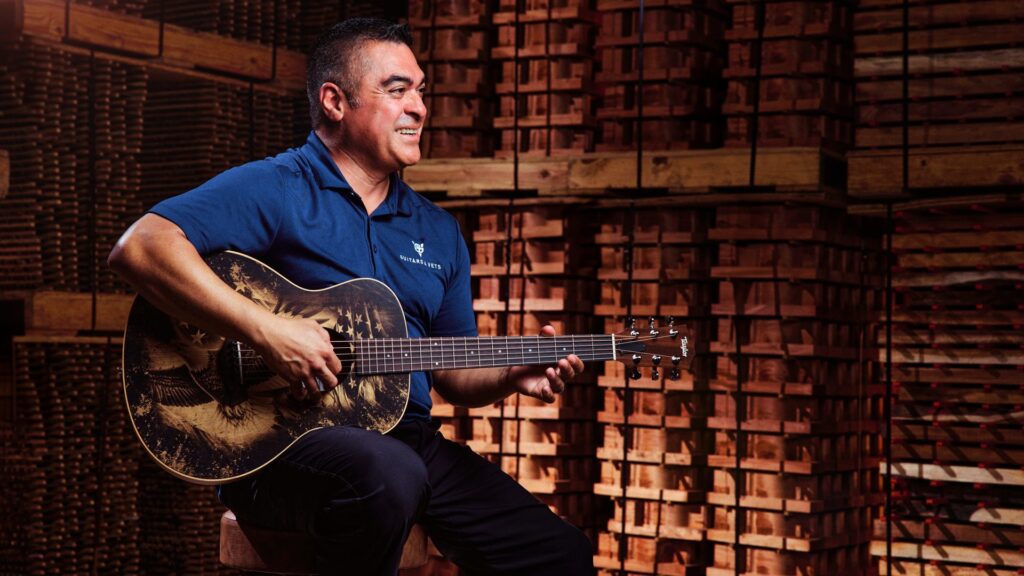I am part Irish but I am not a hardcore “Celtic Style Guitarist” by any stretch of the imagination. Having said that we are going to be taking a look at a Celtic sounding strumming pattern in this little lesson. We will keep the example in 4/4 time to make things simple and straightforward.
I will be tuned to DADGAD in this lesson, but the strumming pattern presented here works well for drop D and standard tunings too. If you have never messed with DADGAD tuning before you are in for a treat. It is very cool sounding and it is not too difficult to jump right into and make some great sounding music. Once you get your guitar tuned to DADGAD you can make a D chord by simply putting your 1st finger on the 2nd fret of the 3rd string and strumming all six strings. This is the chord that we will be using throughout this lesson.
The strumming pattern presented here has a very pronounced gallop feel to it and may be quite different feeling from the typical strumming patterns that you are used to playing. Lets jump right into things and then I will fill you in on some of the finer technical points of the strumming pattern later.
Check out the notation for this strumming pattern. We are using 8th note triplets at about 120 bpm, but take a closer look. The first strum of each triplet group is played with an upstroke while the second and third strums are played with two consecutive downstrokes. Notice that the upstrokes can leave out a bottom string or two and the downstrokes can leave out a few of the top strings.
Actually getting the “Up Down Down” strumming pattern up to speed can be quite challenging at first, but I do have a few tips to make things progress a bit quicker for you. First of all, start out slowly until you get the basic pattern down. You should also try to stay fairly relaxed. Even when you speed the pattern up, you shouldn’t let any excess tension creep in to the picture.
Making sure to use your wrist in conjunction with your arm when you strum will help you stay relaxed and keep your strumming quick. On the initial upstroke I use a combination of my wrist and arm. For the first downstroke I also use a combination of my wrist and arm. For the final downstroke I keep downward strumming motion going with my arm but most of the strumming motion comes from my wrist. Once you start to mess around with this simple pattern, and get it up to speed, you will probably start to hear how it can really conjure up that galloping drone that is sometimes associated with Celtic music.
Play around with this strumming pattern and the DADGAD tuning to come up with your own Celtic sounding music. If you want to use standard tuning I would suggest playing in the key of E because you can still get that nice drone from the open low E string. Enjoy this little idea guys and show it to a friend.
For more guitar lessons, please visit http://www.guitarlessons.com/



























